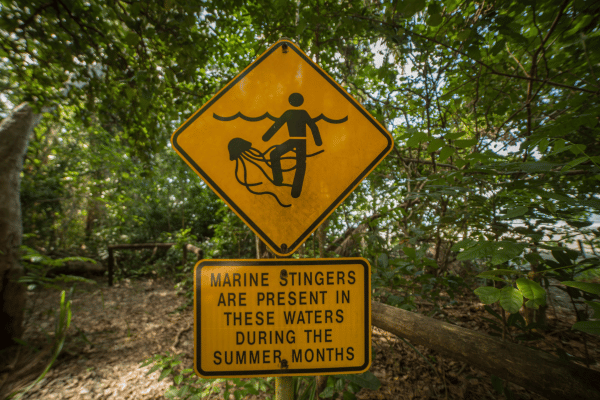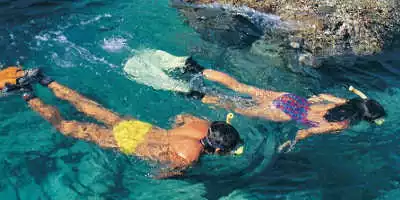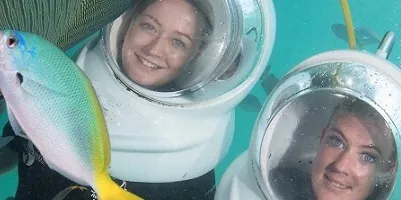
What are stingers and should you be scared?
Written by: Cameron Ward
Published: 11/15/2019
Reading time: 4 mins
The Great Barrier Reef is home to a beautiful array of marine life, but there are some you should steer clear of.
When researching and visiting the Great Barrier Reef you’ll likely see the word ‘stinger’ thrown around a lot, but what exactly is a stinger?
Stingers are a sub-species of jellyfish. Specifically, they are a species that can be dangerous or potentially lethal. They are generally found along the tropical coastlines of Australia and are some of the most feared marine animals down under.
Stingers are particularly dangerous sea creatures. According to experts they ‘kick everything else’s butt’ when compared to other venomous animals. The Box Jellyfish is even considered to be the most venomous animal in the world. These tiny but deadly animals favour calm, warm, clear waters, which is why they are commonly found around the Great Barrier Reef. Stingers are most commonly found around the top of Australia, but they can travel as far south as Sydney and Melbourne.
The most commonly found species of stingers at the Great Barrier Reef are the Box Jellyfish and the Irukandji. The easiest way to identify the jellyfish is by the shape of their body (bell) and the length of their tentacles.
About the Box Jellyfish
Box Jellyfish are large, transparent stingers with a box-shaped bell. They have up to 15 tentacles growing from each corner of their square bell. Though their bodies are small, their tentacles reach up to 3 metres long. They also have incredibly toxic venom, which instantly stuns or kills their prey so that the jellyfish are not injured when hunting.
A person stung by a Box jellyfish will instantly know. A sting from a Box Jellyfish can cause an immediate burning sensation to the skin, and large welts will appear at the contact points. If stung by a Box Jellyfish, the affected area should be immediately doused in vinegar. If you don’t have vinegar, wash thoroughly with seawater. Immediately contact emergency services if you see someone with a sting.
Though Box Jellyfish are highly venomous there is an antivenom available. If somebody is stung by a Box Jellyfish, a medical professional can distribute the antivenom to counteract the sting.
About the Irukandji Jellyfish
Irukandji are significantly much smaller than their Box Jellyfish cousins. Their bell measures a mere 2 centimetres and their tentacles rarely reach a metre in length. Because of this, the Irukandji are incredibly difficult to spot in the water.
Quite often, people don’t even feel the Irukandji sting when it happens. Since many stings aren’t felt right away, they often go unreported until the symptoms appear. Reactions to the sting may take an hour to materialise. Some symptoms of this sting include swelling, headache and vomiting. The sting can also increase blood pressure to life-threatening levels if not treated quickly.
Irukandji can be endemic to shallows around the coast, causing a real hazard to swimmers. If you are stung, you must immediately pour vinegar over the area. It is also important you seek medical assistance for further treatment.
How to avoid stings
The best way to avoid stings from Box and Irukandji jellyfish is to not get in the water during peak stinger season. This occurs between October to May, during Australia’s summer months.
Additionally, be sure to check signage and local warnings for stinger presence. Many beaches close during peak season as a safety precaution. Some beaches may install jellyfish nets; however, Irukandji can still fit through the nets. We recommend you wear a stinger suit if swimming during this time.
Fear not though, all our Great Barrier Reef tours are in waters away from jellyfish habitats. Our guides will help keep you safe in the water and make sure you can enjoy a fear-free Great Barrier Reef trip!
Related article: What is the best time to visit the Great Barrier Reef?










